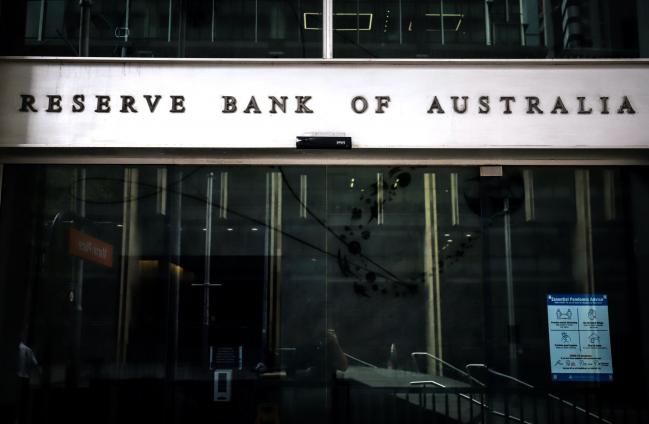The Reserve Bank of Australia said its policy settings were helping hold down the currency, while surging property prices meant it needed to monitor trends in home borrowing, according to minutes of its April meeting.
(Bloomberg) -- Easy policy “continued to support the economy by keeping financing costs very low, contributing to a lower exchange rate than otherwise,” the central bank said Tuesday in the minutes. “Members agreed that it would be important to watch carefully for increased risk-taking by lenders.”
Australia’s V-shaped recovery is reflected in the labor market, with hiring surging and unemployment falling even as the labor force swelled to a record last month. The economy faces a challenging few months ahead with the expiry of the government’s vast JobKeeper wage subsidy program, forcing firms and households to stand alone.
“While the overall recovery in the labor market was expected to pause in the period ahead, this was expected to be only temporary,” the RBA said. “It was likely that the full effect of the end of the JobKeeper program would become apparent over several months.”
Australia's jobless rate dropped to 5.6% in March as employment soared by more than 70,000, according to data released last week, after policy makers held their meeting.
The central bank said in the minutes that A$95 billion had been drawn from its lending facility that provides cheap funding to banks and a further A$95 billion was available until the end of June. The board said it would consider extending the facility if “there were a marked deterioration in funding and credit conditions.” There are no such signs currently, the bank said.
The RBA is currently tapping a second A$100 billion tranche of quantitative easing to help hold down the currency. Beyond this, the bank said it would undertake further bond purchases “if doing so assisted with progress towards the goals of full employment and inflation.”
It reiterated that a decision on whether to roll over yield curve control to the November 2024 three-year bond from the current April 2024 maturity would be made later in the year. Its decision would be guided by “the flow of economic data and the outlook for inflation and employment.”
Australia's hot housing market is likely to be increasingly central in RBA discussions, with house prices rising in March at the fastest pace since 1988.
“Given the environment of rising house prices and low interest rates, the bank would be monitoring trends in housing borrowing and the maintenance of lending standards carefully,” it said.
Yet Australians, like counterparts in much of the developed world, have solid financial buffers as people saved government cash payments during the height of the pandemic. The rapid recovery in the labor market is helping households meet their financial commitments.
The RBA noted survey data suggested income and savings increased for most household income groups, “with most of the additional saving undertaken by higher-income households.”
The RBA also provided some observations on the economy's performance in the first quarter:
- GDP in the March quarter was likely to have recovered further to around its pre-pandemic level, earlier than previously expected; and
- Growth in household consumption had moderated in the March quarter following strong growth in previous quarters
In a cross-country reference discussion, the RBA noted that despite Australia's rapid recovery in employment, wages growth had slowed to a greater extent “and had been more subdued than in other countries.” A key reason is Australia's labor market adjusted by reducing hours and restraining wages, whereas countries like the U.S. adjusted through a decline in employment.
The upshot is that the central bank's goal of wages growth sustainably above 3% to return inflation to target remains a high hurdle.
The RBA also noted in the minutes that the board would have a broader discussion on the implications of climate change for financial stability in coming months.
©2021 Bloomberg L.P.

